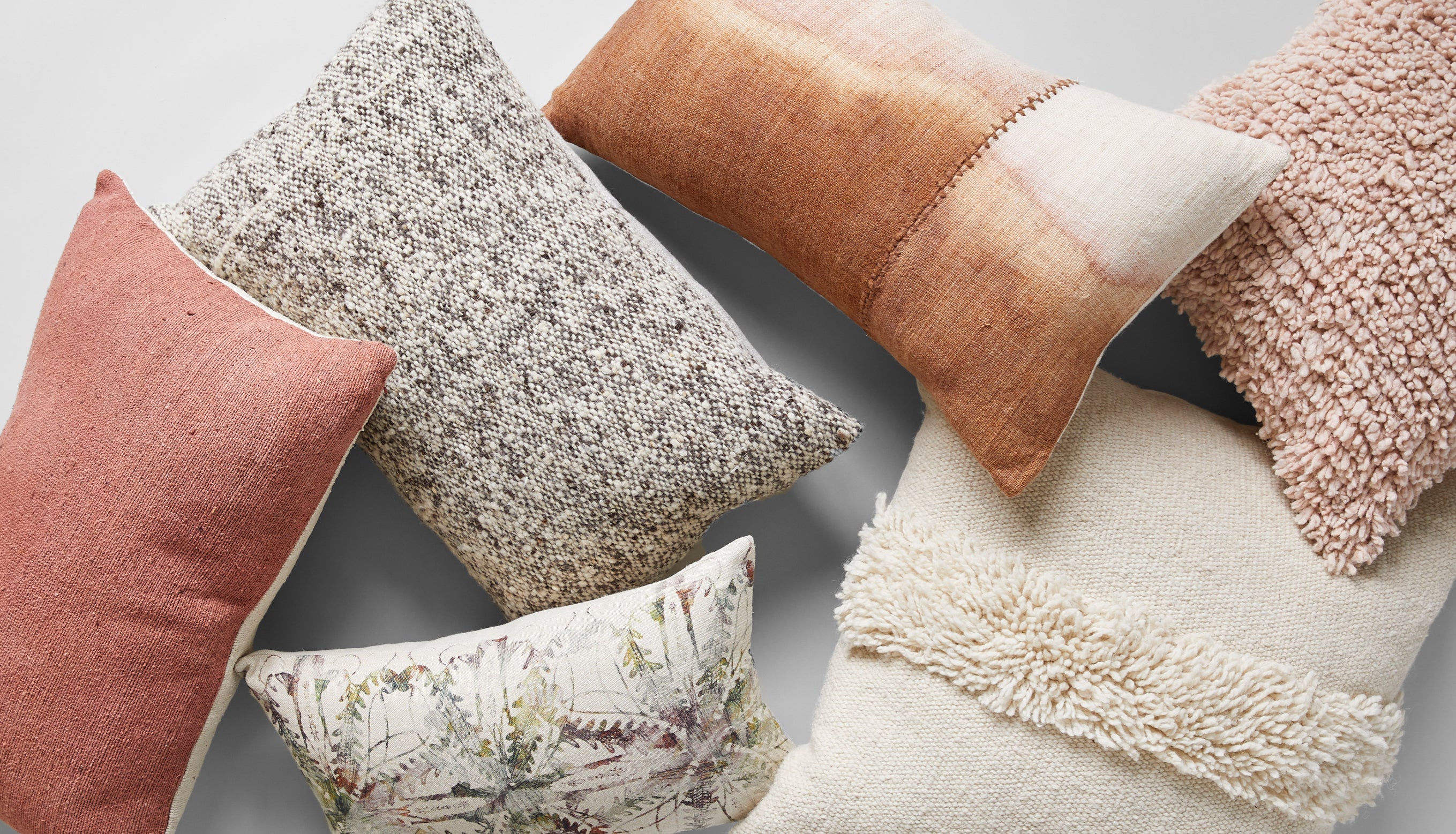Gifting has never been easier
Perfect if you're short on time or are unable to deliver your gift yourself. Enter your message and select when to send it.
French designer and plant dyed devotee, Marie Silanes, uses botanical extracts to give her artisan crafted textiles their natural, nuanced hues.
Story by Diana Keeler / Photography by Delphine Talbot, Cora Büttènbender, India Flint, and David Chow

“These fabrics tell the story of a people,” says French designer Marie Silanes, who hand-produces cushions, pillows, and other home goods with silk, cotton, and alpaca and merino wool made by artisans in India, China, and Bolivia. “When I see normal fabrics — industrial fabrics — they just don’t talk about the same things.”

The Bordeaux-based textile designer first traveled to India while working for an apparel and homewares company; she now collaborates with a small group of weavers across three countries. (She’s now looking at developing partnerships in a fourth — Morocco — with its own resonant history in the art of natural dyes, like indigo.) Silanes provides weavers with samples and sketches without an intermediary; the weavers return fabric, feedback, and concerns. “I don’t work with any associations because I prefer to work directly with the craftsmen,” she says. “And I prefer to issue payment directly to the weavers.”

In Bolivia, some of this process is achieved alongside fellow French designer Véronique Valdès, who settled in La Paz in 1993 and runs Andi’Art, her own brand of artisan-produced textiles. “When I started out with my studio, I produced cushions for her [using her textiles],” Silanes says. “Now we work together — and she’s there in case we need to consult with the weavers beyond what I can do by sending a drawing or a sample.”

Fabric in hand, Silanes assembles and finishes all of her pieces in France, after they undergo the painstaking process of natural dyeing, a product of her ongoing work with famed natural dyer and botanist Michel Garcia. (Garcia offers workshops around the world teaching the practice, including one upcoming summer program that combines a tour of the Loire Valley and Brittany with a study of natural dyes and medieval tapestries.) Silanes met Garcia at a Paris workshop on using natural dyes with wool and silk; she still relies on his studio for raw materials, like rhubarb.


The appeal of natural dyeing, she says, is in its interaction with fabric fibers — both in shibori-style printing, in which knotted fabric is dipped in dye and then unknotted to reveal its pattern, and in silk-screening. “I work with natural dyes because when you use chemical dyes, the dye just goes on top of the fabric, sitting on the surface,” she says.

“With natural dyes, the dye goes inside the fiber.” While maintaining the stability of naturally dyed textiles is her top priority, working with natural dyes also provides some perhaps unexpected advantages in terms of a piece’s appearance and durability. “Even with repeated washing, colors stay brighter with natural dye, while chemical dyes will lighten with use,” she says.
“There’s also a harmony of colors — with vegetable dyes, the colors always look great together.” She’s now experimenting with silk-screening natural dyes, which offers some of the same benefits. “I’ll use screen printing to achieve more complicated designs,” she says. “With chemical dyes, you’ll have a ‘crust’ on top of the fabric, especially with wool — but again, with natural dyes, the dye goes inside the fiber.”

Above, left to right: plant-dyed raw silk pillow in rose, textured brown tweed pillow, belgian linen pillow with arabesque print, dip dye wool pillow in blush, puna handwoven ivory pillow, handmade wool shag pillow in blush.
Silanes is still exploring, looking for new fabrics to pair with her increasing knowledge of natural dyes, its application techniques, and their possibilities: “I’m excited to develop new products — especially for the kitchen — and discovering new ways to use them,” she says. She’ll also look for inspiration overseas: Perhaps fittingly, Silanes says her work has met with more receptive audiences in the U.S., Japan, and elsewhere in Europe than in her native France. “Here in France, [the reception] is really quite cool,” she says with a laugh. “I think we don’t have the same interest in materials — or maybe we just want IKEA.”
Your Shopping Cart is Empty
Browse our latest collection or check your saved favorites to add more items to your cart.






Manage your profile, track your orders, and enjoy a seamless shopping journey with us.